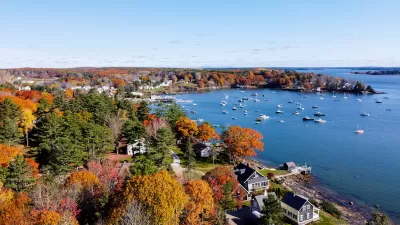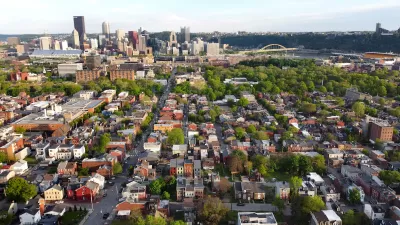Locating residential development closer to city centers comes with a price: increased exposure to air pollutants.
Locating residential development closer to city centers comes with a price: increased exposure to air pollutants. The big irony is that much of this air pollution is vehicle-related -- resulting from our intractable framework of sprawl and auto dependence. Urban residents, who are more likely to walk or take public transit, therefore bear the brunt of suburbanites' SUV lifestyle.
A number of recent studies have confirmed the health risks of living near freeways and busy roads. Within a quarter mile of downtown Portland's freeway corridors, carcinogenic pollution levels measured 100 times higher than state safety standards. These areas have seen a boom in smart growth housing in the last few years. In another study, USC researchers found that children living near Los Angeles freeways suffer from impaired lung development, leading to lifelong respiratory disorders. A third investigation, which followed pregnant women in Bronx, NY, linked vehicle emissions to fetal damage and childhood cancers. It's becoming clear that pollution risks go far beyond ambient regional air quality. They are highly localized, varying at the neighborhood level and even smaller.
Is this a reason to abandon smart growth and head for the hills? That would be a big step backwards, as more sprawl would simply lead to a further increase in vehicle miles traveled. Fleeing the problem is also no way to solve it. Now that wealthier communities are getting a taste of environmental justice, they are coming face-to-face with the grim reality of our fossil fuel based economy. Perhaps that alone will help to accelerate changes to our energy and transportation systems.
In the meantime, planners will need to carefully consider air quality when exploring new residential projects. There is no good reason to build up against a freeway when urban neighborhoods with more diffused traffic exist, even if these alternative locations require construction at smaller scales. Buffering residential areas with parkland would also help. Most importantly, new developments should be part of the solution (walkable and transit oriented) rather than part of the problem (autocentric malls and condominiums).

Alabama: Trump Terminates Settlements for Black Communities Harmed By Raw Sewage
Trump deemed the landmark civil rights agreement “illegal DEI and environmental justice policy.”

Planetizen Federal Action Tracker
A weekly monitor of how Trump’s orders and actions are impacting planners and planning in America.

Why Should We Subsidize Public Transportation?
Many public transit agencies face financial stress due to rising costs, declining fare revenue, and declining subsidies. Transit advocates must provide a strong business case for increasing public transit funding.

Understanding Road Diets
An explainer from Momentum highlights the advantages of reducing vehicle lanes in favor of more bike, transit, and pedestrian infrastructure.

New California Law Regulates Warehouse Pollution
A new law tightens building and emissions regulations for large distribution warehouses to mitigate air pollution and traffic in surrounding communities.

Phoenix Announces Opening Date for Light Rail Extension
The South Central extension will connect South Phoenix to downtown and other major hubs starting on June 7.
Urban Design for Planners 1: Software Tools
This six-course series explores essential urban design concepts using open source software and equips planners with the tools they need to participate fully in the urban design process.
Planning for Universal Design
Learn the tools for implementing Universal Design in planning regulations.
Caltrans
Smith Gee Studio
Institute for Housing and Urban Development Studies (IHS)
City of Grandview
Harvard GSD Executive Education
Toledo-Lucas County Plan Commissions
Salt Lake City
NYU Wagner Graduate School of Public Service




























